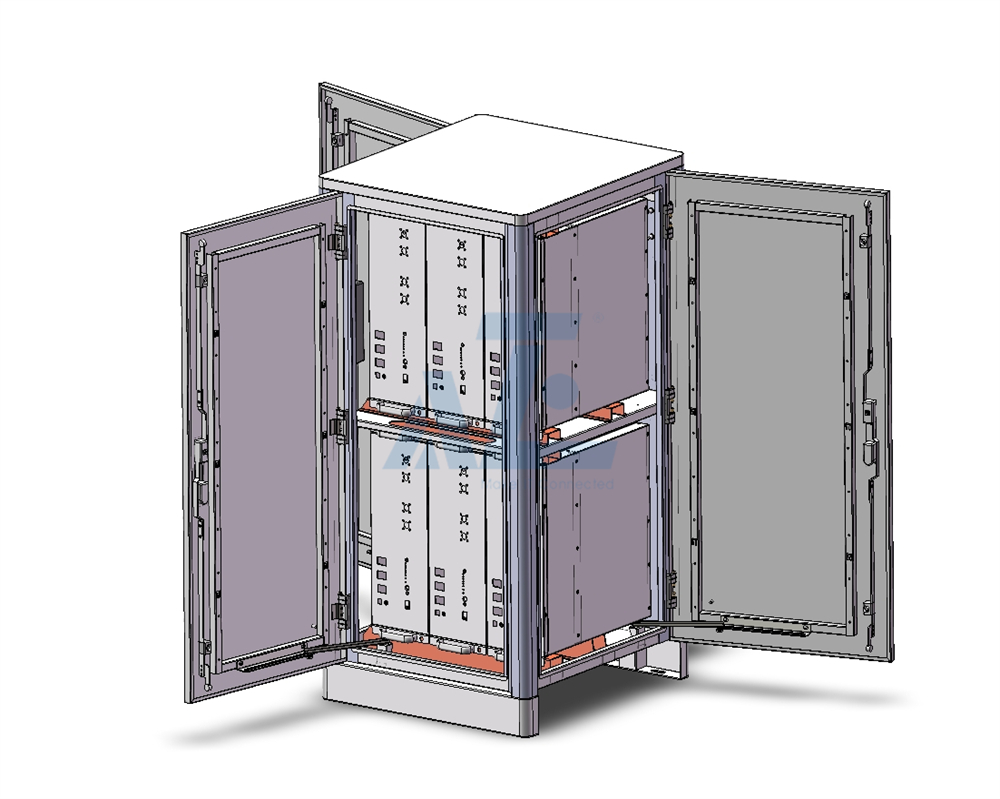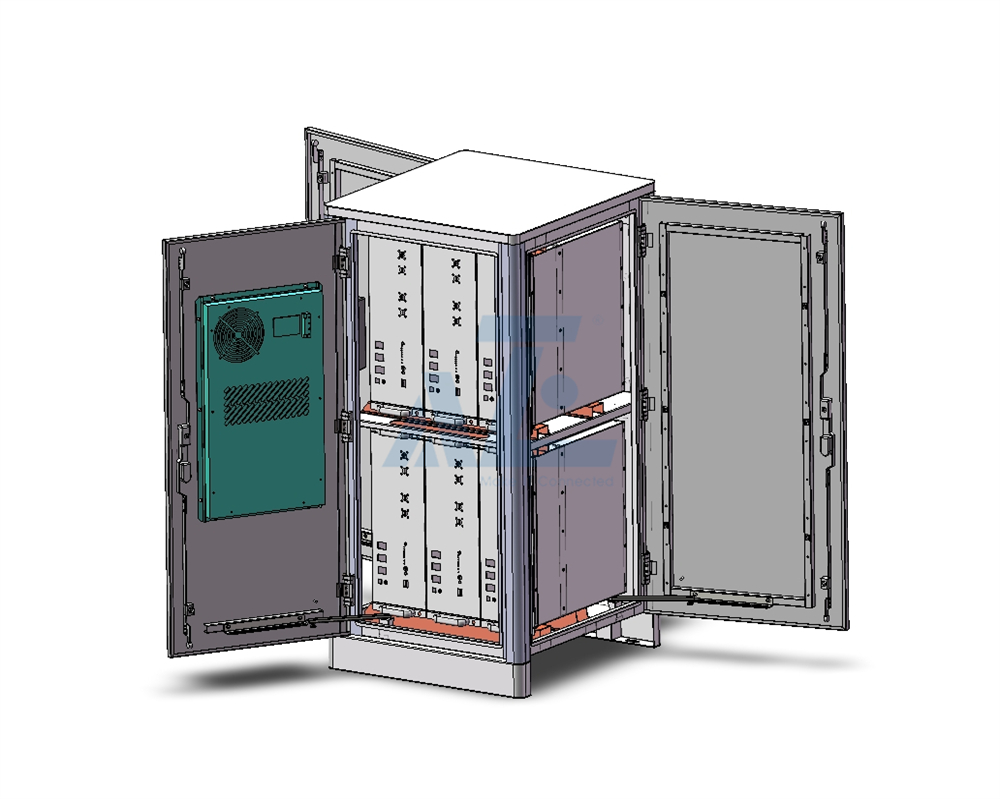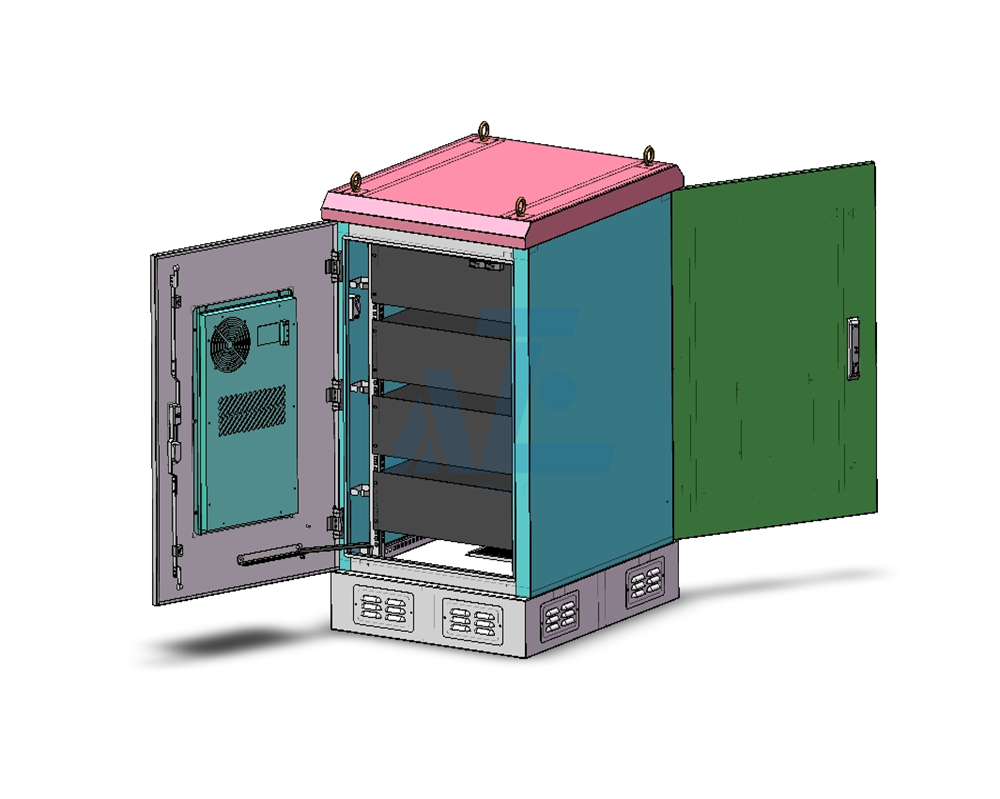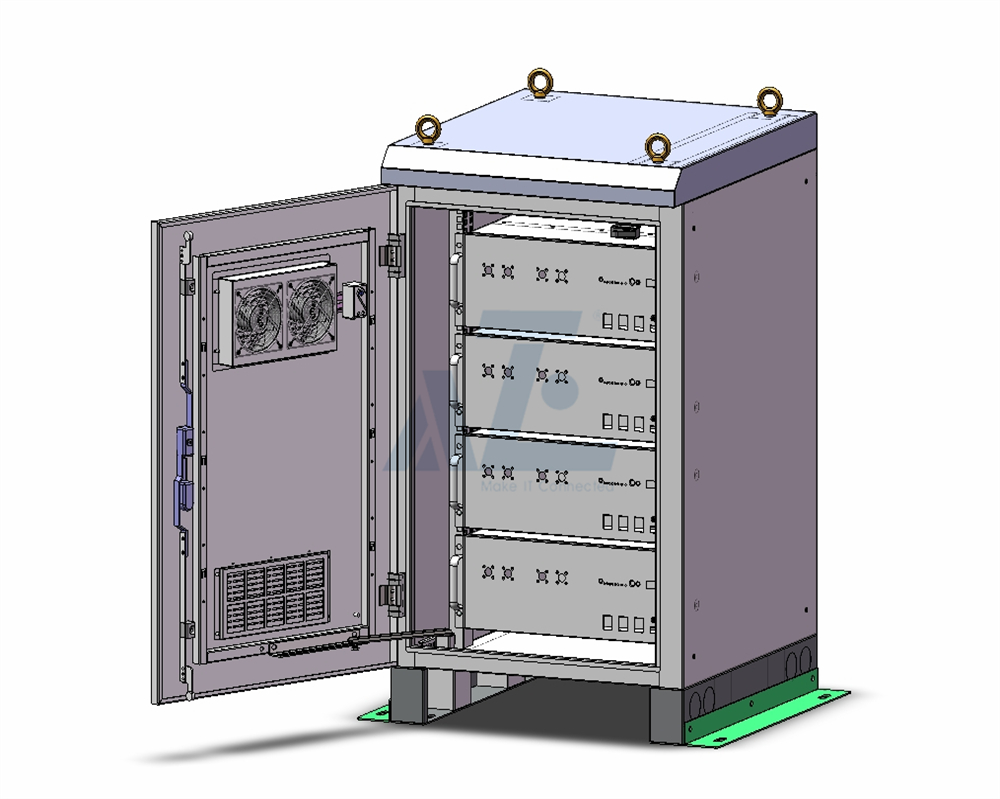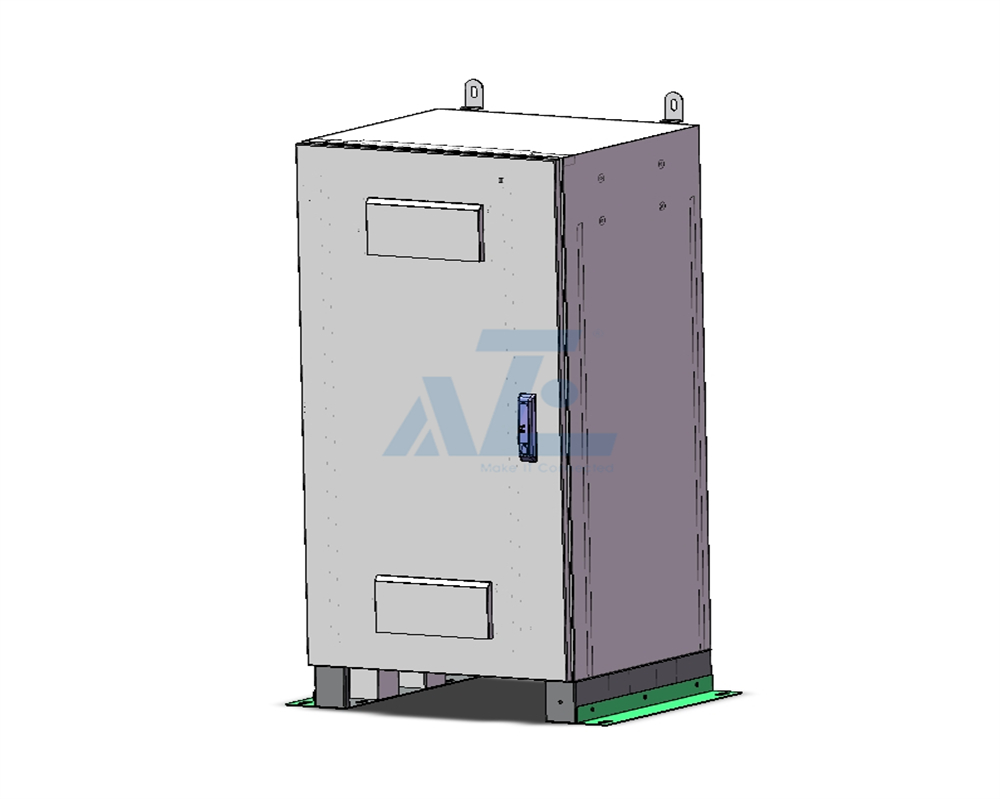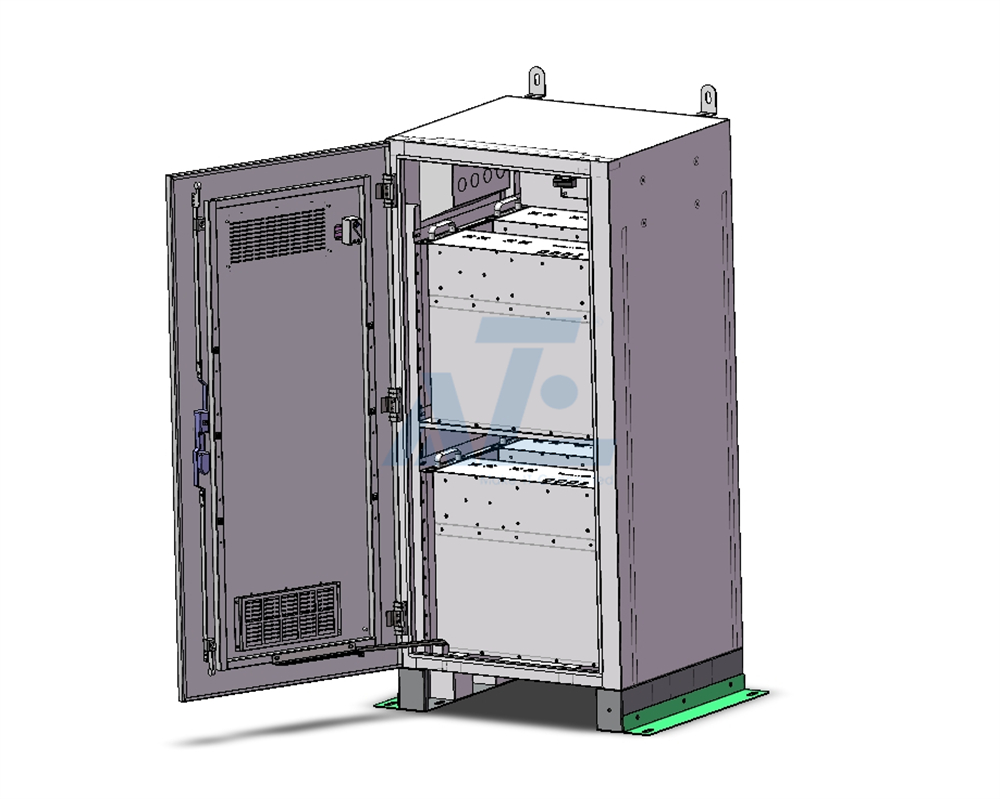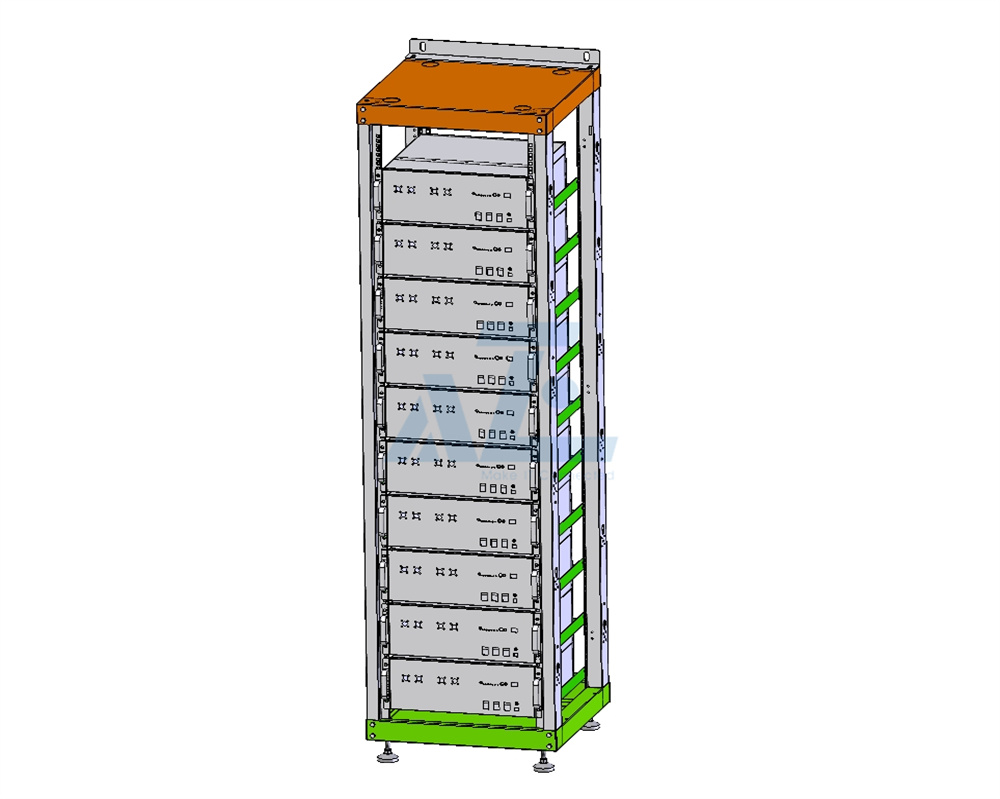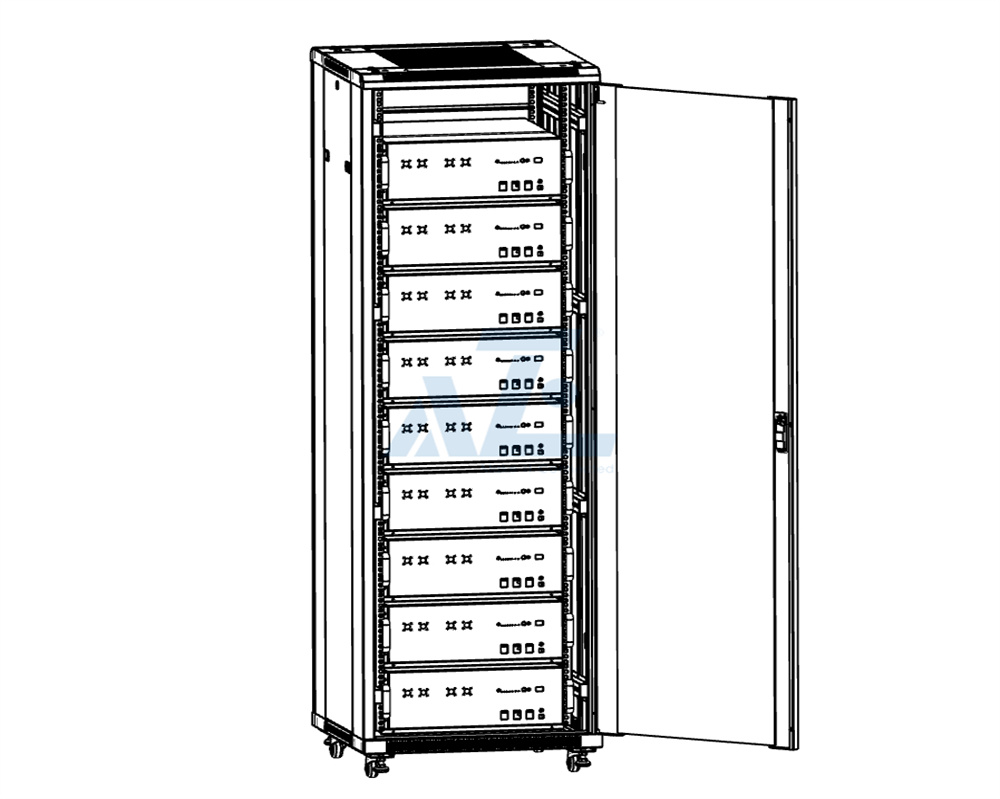Perfect thermal design, efficient energy saving and emission reduction, reduce the operation costs effectively. AZE's outdoor battery cabinet protects contents from harmful outdoor elements such as rain, snow, dust, external heat, etc. Plus, it provides protection to personnel against access to dangerous components.They are made of galvanized steel, stainless steel or aluminum with heat insulation material according to different requirements and climate controlled options such as air conditioner,heat exchanger or TEC can keep a stable temperature inside outdoor battery enclosures.
Keep your batteries safe from weather, vermin and damage with our battery racks and battery enclosures. AZE have enclosures for wall or floor mount with models available for indoor and outdoor applications. Our racks and enclosures create a safe and professional look.
AZE offers a wide variety of large outdoor battery and electronics enclosures for emergency backup UPS and solar storage applications. Our NEMA 3R Design Battery & Control Enclosures feature powder-coated aluminum, swing out door or chest style, filtered vents and an optional NEMA 4 design separate electronics enclosure. A pedestal base is included for secure mounting.
A BESS is a type of energy storage system that uses batteries to store and distribute energy in the form of electricity.These systems are commonly used in electricity grids and in other applications such as electric vehicles, solar power installations, and smart homes.At its most basic level, a BESS consists of one or more batteries that store electrical energy for use at a later time. This stored energy can then be drawn upon when needed to meet various demands for power across different applications.BESS can also provide advantages over other energy storage systems, including greater efficiency and flexibility, faster response times when powering equipment or devices, and lower costs overall.
What is a BESS?
A BESS is a type of energy storage system that can be used to store excess energy from renewable sources.Battery Energy Storage Systems (BESS) are an essential part of renewable energy solutions, allowing for the storage and distribution of electricity generated from sources like solar and wind power. As demand for clean energy increases, understanding the basics of these systems can help you make informed decisions about their applications and benefits.
How does BESS work?
BESS relies on one or more batteries to store energy, which can then be used at a later time.These batteries may be charged using excess electricity generated by wind or solar farms, for example, or by grid connection during periods of low demand. Once the battery is full, it stores the electricity until it is needed.
Battery Energy Storage Systems offers more than just a standard battery. It is fully packed with technologies allowing its system to capture charge and execute discharge. The following are the typical technologies it includes:
A complete Battery Energy Storage System is comprised of several key components that work together to store and distribute electricity:
- Batteries: The core component of any BESS, batteries store the electrical energy in the form of chemical energy and release it when needed.
- Charge controller: This manages the flow of electricity between the battery and the connected energy source (e.g., solar panels), ensuring the battery is not overcharged or drained too quickly.
- Inverter: The inverter converts the stored direct current (DC) energy from the battery into alternating current (AC), which can be used by your appliances and the grid.
- Monitoring and control system: This component allows you to monitor the performance of your BESS, providing insights into its health, efficiency, and any maintenance requirements.
As you explore battery energy storage systems for your renewable energy needs, keep in mind the considerations for battery types and the essential components that make up these systems. With the right combination in place, a BESS can significantly enhance the effectiveness and reliability of your renewable energy setup.
What are the different types of BESS available?
There are many different types of BESS available, including lithium-ion batteries, lead-acid batteries, flow batteries, and flywheels.Each type has its advantages and disadvantages in performance, lifespan, cost, and other factors.
-
Lithium-Ion Batteries
These batteries are one of the most popular types of BESS. They offer a high energy density and are relatively lightweight, making them easy to transport and install.
- Lead-Acid Batteries
Lead-acid batteries are another common type of BESS. They are typically cheaper than lithium-ion batteries but have a shorter lifespan and are not as efficient.
- Flow Batteries
Flow batteries are a newer type of BESS that offer a longer lifespan than traditional lead-acid or lithium-ion batteries.
They work by storing energy in an electrolyte solution, which can be redirected to different parts of the battery as needed.
-
Flywheels
Flywheels are another energy storage system that uses kinetic energy to store and release electricity.Flywheels are typically used for short-term storage applications, such as load leveling or backup power generation.
Advantages of BESS
There are several advantages to using BESS, including:
- Provide a cost-effective way to store excess energy generated by renewable sources like wind and solar farms.
- Can store excess electricity generated by renewable energy sources such as solar or wind farms, allowing it to be used at a later time when these sources are not available.
- BESS can provide backup power during outages or extreme weather events, reducing the need for costly distribution upgrades or emergency generators.
- Assist in load leveling and grid support, helping to balance fluctuations in electricity demand throughout the day and reduce congestion on the grid.
- Bess can improve power quality by smoothing out voltage fluctuations that may otherwise disrupt equipment operations.
- Many types of BESS are easy to install, making them a popular choice for businesses and homeowners looking for reliable energy storage systems.
Disadvantages of BESS
While there are many benefits to using BESS, some potential drawbacks should be considered. These include:
- Higher upfront costs compared to other energy storage solutions.
- Issues with performance and lifespan are associated with certain types of BESS, such as lithium-ion batteries or flywheels.
- Increased need for maintenance and monitoring, especially if a qualified technician does not install the BESS.
- The reliability of BESS is typically lower than that of traditional power generation sources like fossil fuels or nuclear power plants.
What is Outdoor Battery Enclosure?
The outdoor battery enclosure is a housing, cabinet, or box that can be used outdoor and specifically designed to store or isolate the battery and all its accessories from the external environment. Outdoor battery enclosures keep your batteries safe from weather and safe from theft. Outdoor battery enclosure boxes also feature locking machanisms that protect unauthorized people against possible electrical dangers if they happen to be tampering with your equipment.
The main functions of outdoor battery box enclosure are:
- Offer safe and reliable storage solution
- Protect the battery by isolating it from the external environment
- Make installing batteries in vehicles and other electronics simpler, easier, and more convenient
- Prevent unauthorized people from accessing the battery
Outdoor Battery Enclosures Vs. Indoor Battery Enclosures
Indoor battery cabinet should have at least NEMA 1 rating. On the other hand, outdoor enclosures for batteries should have a NEMA 3R rating.
It is important to note that the NEMA and IP rating varies depending on where you will install the enclosure.
A range of outdoor energy storage battery cabinets and outdoor lithium battery cabinets are available in standard and custom configurations, can be pole-mounted or ground-mounted . They are suitable for indoor and outdoor environments.They are integrated with thermal insulation, equipped with a cabinet air conditioner with different refrigerating capacity. It can effectively control the inner ideal temperature of the cabinet and make the communication equipment run in an ideal temperature condition.
Mounting Mechanism for Battery Cabinet
It refers to how you will install the battery box. Among the many options you can consider are:
- Rack mount battery box enclosure
- Ground or Floor mount battery box
- Pole mount battery storage enclosure
- Wall mount battery enclosure
Material for the Enclosure
A good material for the battery box should be:
- Easy to clean
- Durable and long-lasting
- Offer excellent thermal properties
- Resistant to corrosion and weather
Among of different materials, aluminum and stainless steel guarantee better performance. Beside those elements, you can identify battery box enclosures based on:
- Surface finish – there are painted, powder coated, etc.
- Side – there are small, medium to large sizes
- Additional accessories – enclosures with ventilation systems, handles, alarms, etc.
Aluminum Outdoor Battery Enclosures
Aluminum is a popular material for battery cabinets due to its superior properties. Ideally, aluminum is known for:
- Excellent corrosion resistance
- Sustainability since it is easily recyclable
- Better thermal properties
- Lightweight
- Durability and strength
- Resistance to impact
- Unlimited surface finishing
Galvanized / Stainless Steel Outdoor Battery Enclosures
Stainless steel battery boxes and galvanized steel battery boxes are also common.
- Strength and durability
- Better thermal properties
- Stainless steel has excellent corrosion resistance
- Temperature resistance
- Sustainability
- Low maintenance
Operation and Safety
Charging and Discharging
Charging and discharging your battery energy storage system (BESS) are essential processes for its operation. Ensure you follow the manufacturer’s guidelines for charging rates, discharge rates, and overall usage protocols. This will help prolong the battery’s lifespan and maintain its optimal performance.
When operating your BESS, be mindful of the following points:
-
Avoid overcharging or over-discharging the batteries as this could lead to reduced performance or potential hazards.
-
Be aware of the battery’s active and idle states to prevent issues related to temperature, humidity, and ventilation.
Battery Maintenance
Regular maintenance is critical for the safe operation and longevity of your BESS. Implement a suitable maintenance schedule based on the manufacturer’s recommendations and industry standards. Key aspects of battery maintenance include:
- Periodic inspections: Check for signs of wear, leakage, and corrosion.
-
Cleaning: Keep the battery and its surroundings clean and free from debris or contaminants.
-
Voltage and capacity testing: Monitor the battery’s performance and health over time.
Safety Measures
Implementing safety measures is crucial to reduce the risk of incidents and ensure the safe operation of your BESS. Here are some of the recommended safety practices:
-
Install proper safety devices: Equip your BESS with appropriate safety equipment such as fuses, circuit breakers, and fire suppression systems.
-
Follow guidelines for installation and connection: Follow the manufacturer’s instructions for proper installation and connection within the electric power system.
-
Strategic placement: Position your BESS in a well-ventilated, temperature-controlled environment away from potential sources of ignition.
-
Training: Ensure that all personnel handling the BESS are adequately trained to prevent accidents and respond to emergencies.
By following these guidelines and best practices, you can ensure that your battery energy storage system operates efficiently and safely, maximizing its benefits and minimizing potential risks.
How do battery energy storage systems operate?
Battery energy storage systems (BESS) work by charging or collecting energy from the grid or a power source and then discharging that energy at a later time to provide electricity or other grid services when needed. They help in managing fluctuations in power demand and supply, ensuring a reliable and consistent energy source for your needs.
Which battery type is optimal for storing energy?
There are several types of batteries for energy storage, including lead-acid, lithium-ion, and flow batteries. Each has its advantages and drawbacks. Lithium-ion batteries are currently the most popular choice for energy storage due to their high energy density, long cycle life, and relatively low maintenance requirements.
How long can a battery storage system typically last?
The lifespan of a battery storage system mainly depends on the type and quality of the battery, as well as how frequently it is cycled (charged and discharged). Most battery storage systems are designed to last for 10 to 15 years, with lithium-ion batteries often providing better performance and longer lifespans compared to other battery technologies.
What are some benefits of using battery energy storage?
- Using battery energy storage can provide several benefits, such as:
- Increased grid reliability and resiliency
- Support for renewable energy integration
- Reduced electricity costs by avoiding peak-time rates
- Greater energy independence and self-sufficiency
Can battery storage systems be used for residential purposes?
Yes, battery storage systems can be used for residential purposes. Homeowners can install a battery energy storage system alongside solar panels or other renewable energy sources to store excess energy for later use. This enables better energy management and can help reduce reliance on the grid, potentially lowering electricity bills and providing backup power during outages.
Applications of Outdoor Battery Enclosure Cabinets
Battery enclosure cabinets play an important role in modern industries. From aerospace, military, automotive, medical to energy industries depend heavily on these accessories.
- Grid Support
Battery energy storage systems can greatly support the stability of the electrical grid by providing frequency response, reserve capacity, black-start capability and other services. These systems help to improve the efficiency of the grid, enabling it to operate more reliably and flexibly. As a result, battery energy storage can reduce the need for building new pollution-emitting peak power plants and increase the capacity factor of existing resources.
- Renewable Energy Integration
Integrating renewable energy, such as solar and wind, into the grid can be challenging due to their intermittent nature. With battery energy storage, you can store excess energy generated during periods of high renewable output and discharge it when needed, making the grid more resilient and accommodating a higher percentage of clean energy. This ability to store power not only helps with the transition to sustainable energy systems but can also support self-consumption and upgrade mini-grids.
- Backup Power Solutions
Battery energy storage systems can also provide backup power solutions for residential, commercial, and industrial applications. In the event of a power outage or adverse conditions, energy storage can maintain the electricity supply, ensuring the continuity of essential services and increasing resiliency. These backup systems can be particularly useful in areas prone to natural disasters or where grid stability is a concern.
By investing in battery energy storage systems, you can enjoy multiple benefits, including enhanced grid support, seamless renewable energy integration, and reliable backup power solutions.
- Electric vehicle battery storage
- Traffic lights
- Outdoor solar lights
- Safety systems for both fire and life
- Security systems
- Power equipment
- Fiber optics systems
- Indoor lighting systems, etc.

